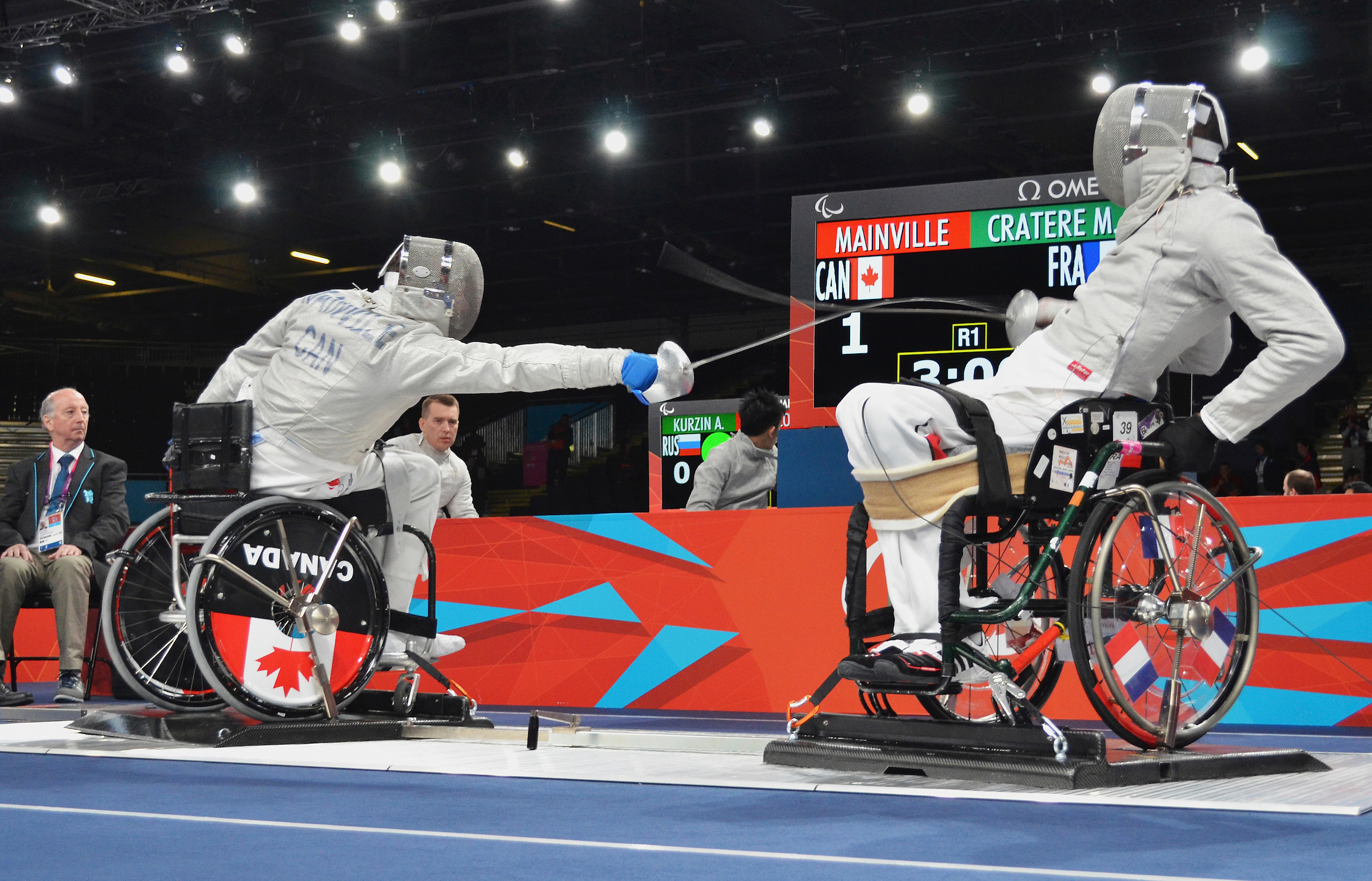
Wheelchair fencing
Summer Sports

Summer Sports
Wheelchair fencers compete in foil, epee and sabre. Their wheelchairs are fixed to the ground facing each other and the two combatants battle using only their upper bodies. Men and women compete separately.
Wheelchair fencing has been a Paralympic sport since the first Games in Rome in 1960. Since then, the rules have been adapted to meet the advancements in techniques applied to fixing the athlete’s wheelchair to the ground. Canadian wheelchair fencers made their Paralympic debut at the 2000 Summer Games in Sydney.
The objective in wheelchair fencing is for the athlete to score 15 points (or the greatest number of hits) against his/her opponent. Athletes are connected electronically to a signal box that records the touches of the weapon. A point is awarded each time a fencer touches the opponent in the target area.
The fencer with the shortest arms decides if the playing area will be at his distance or that of his opponent. During play, the fencer holds the fencing weapon in one hand. The other hand is used to hold onto the wheelchair when lunging and recovering. Feet must remain on the footrest and the fencer must remain seated.
In preliminary individual events, each bout lasts three minutes. The winner is the first to score five hits (or the greatest number of hits) in the bout. This is followed by a knockout system where athletes compete in three, three-minute rounds with a one-minute break between rounds. The winner is the first to score 15 hits (or the greatest number of hits) in the bout. In the case of a tie an extra one-minute bout is played. The first to score a hit is the winner. In team events, the first team of three to score 45 hits is the winner.
In foil, points are scored with the tip of the blade and must land within the torso of the body. In sabre, the target area is any part of the body above a horizontal line drawn between the top of the folds formed by the thighs and by the trunk of the fencer. In epée competitions, the target is everything above the waist with an apron being worn below the waist to aid in cancellation of these touches.
Wheelchair Fencing is overseen by the International Wheelchair & Amputee Sports. Fencing Canada is the National Sport Federation.
Athletes who use wheelchairs are eligible to compete in wheelchair fencing. This generally includes athletes who have had a spinal cord injury (quadriplegic and paraplegic), lower leg amputation or who have cerebral palsy or other physical disabilities that require the use of a wheelchair.
There are three divisions of competition based on disability classification. Athletes are classified into one of three classes” A, B, or C. However, class C competitors do not compete at the Paralympic Games. Each athlete is examined by the classification team to determine his/her ability to perform the skills needed to fence. Athletes are required to perform various lunges to determine their ability to return to an upright position following a lunge forward or to the side. They are also tested for arm extension, speed of movement, chest extension and balance. Athletes are assigned point scores based on their ability to perform the required skills. The higher the final point score, the greater the ability of the athlete to perform the required skills. Athletes classified as an “A” have more ability to perform the skills than athletes classified as either “B” or “C”.